In 2013, the UK consumer guide Which estimates that the cost of heating a 3-bedroomed home, and providing hot water, using an oil-fired central heating system, is approximately £1,355 per year.
Which go on to say that oil is an extremely fuel-efficient form of heating, in terms of the return you get for each unit of energy - particularly if you have a modern condensing boiler.
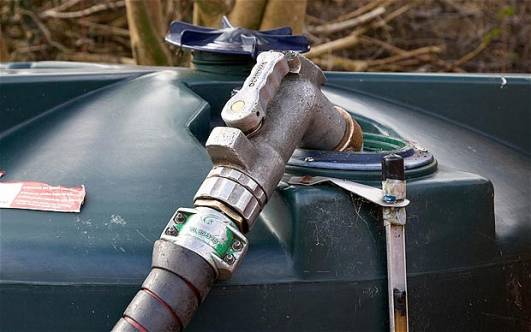
Of course, oil is a fossil fuel, which produces carbon dioxide when burned, and thus can't be considered a green form of energy.
Also, fuel prices for both gas and oil continue to rise, and are likely to continue to do so as the UK has to compete with other countries in a world where demand for fuel is growing.
What cheaper alternatives are there to an oil-fired system?
In order to find a more cost-effective alternative to your oil-fired central heating system, you might therefore want to consider installing a renewable heating system instead, according to Which.
This type of system could involve using one (or a combination) of the following:
- Water-heating solar thermal panels
- A ground-source heat pump
- An air-source heat pump
Solar water heating

This uses solar panels fitted to your roof to heat some of the water for your home, and a typical system can heat a third of the hot water that the average household requires.
Which estimate that the savings achieved by this type of system, for a 3-bedroomed, semi-detached house, would be in the region of £55 to £80 per year.
You can also claim a payment of £300 towards the cost of installing such a system, via the government's Renewable Heat Incentive Premium Payment Scheme.
Maintenance costs are apparently very low, and there are only minimal costs related to running the system, usually in the form of the electricity needed to power the pump.
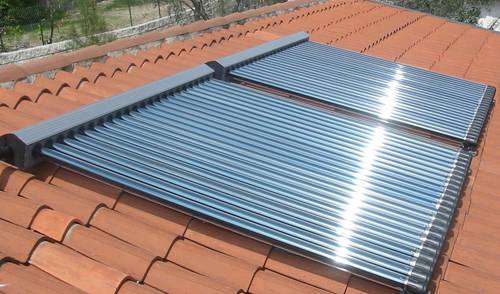
Planning permission for such installations is rarely required in England (although this would not be the case for listed buildings), and I gather that Wales, Scotland and Northern Ireland are also considering similar planning initiatives.
On the downside, there are a number of things to consider in relation to the installation of a solar water heating system, which include:
- The need for an unshaded, south-facing location to install the solar panels
- You will still require an immersion heater, or boiler, to increase the heat of the water, or to compensate for dull days that are lacking in sunlight
- Your roof will need to be strong enough to take the weight of the solar panels, which can be very heavy
- The initial, up-front costs of installing such a system are significantly higher than for conventional systems
It is also worth pointing out that, in an investigation carried out in 2010, Which found that 10 out of 14 renewable solar heating companies exaggerated the savings to be made from changing from a conventional form of heating to one of their systems.
You can find more advice on solar water heating systems in Which's guide to the subject, here.
Ground-source heat pumps
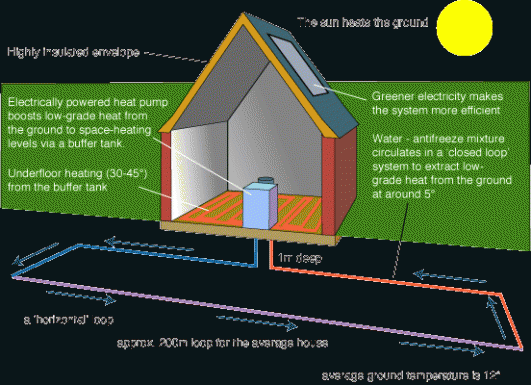
This type of system uses heat from underground by pumping water through it. Then the heat pump increases the temperature of the water, and uses it to provide hot water and/or heating for your home.
The heat pump acts as a conventional boiler, but uses the heat from the ground rather than fuel to generate the heat. (The pump requires electricity to run it, though.)
A garden of a sufficient size to allow for the installation would be required, as well as access for the machinery needed to dig the necessary trench.
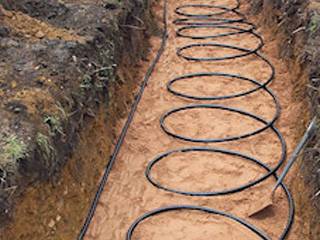
Installing this type of system is extremely expensive - and Which estimate that it would cost anything between £9,000 to £17,000
Which go on to say that the Energy Saving Trust (EST) found that a ground-source heat pump could save you £180 per year, when used to replace an oil-fired central heating system - but warn that some systems did not actually reduce costs at all, during trials the EST carried out.
Positive aspects of this type of system include:
- Efficiency. For every unit of electricity used by the pump, it will generate 2-4 units of heat.
- You can use cheaper Economy 7 heating to run the pump, to lower the cost of electricity, or you could even use a wind turbine (if allowed) or solar photovoltaic panels to produce greener electricity.
- The cost of groundworks can be very expensive, and these works will also be disruptive and will require planning permission. For this reason, installing ground-source heat pump systems in new-build housing is a much easier option than fitting them to older houses.
- The systems really require the levels of insulation and air-tightness that is usually only achievable in a new-build house.
- They are expensive to install
- They are not really a zero-carbon option, unless a source such as a wind turbine or solar panels is used to provide the electricity to run the pump.
Air-source heat pumps
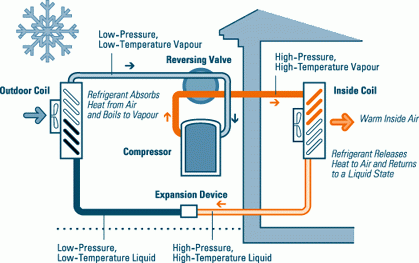
These pumps are less well-known than ground-source heat pumps, but work on a similar principle. However, they use air from outside, instead of water pumped through the ground, in order to operate.
For more details on air-source heat pumps, the savings they offer, and a list of pros and cons, you might want to take a look at Which's Guide to air source heat pumps.